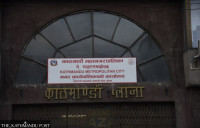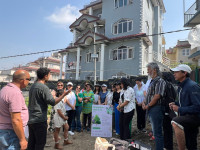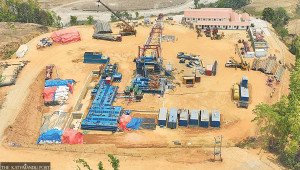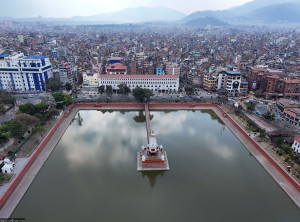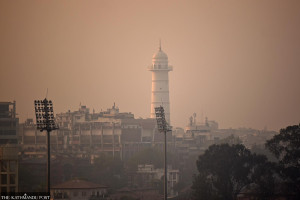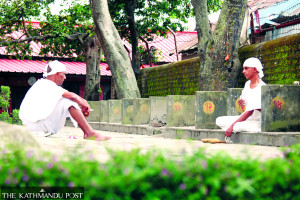Valley
Government launches nationwide tree plantation campaign, but experts say focus should be on saving the saplings
At least 40 millions trees to be planted in the next year
Chandan Kumar Mandal
The government’s plan to plant at least 40 million trees in a year formally started on Saturday with plantation along the Koteshwor-Kalanki stretch in Kathmandu.
According to the Ministry of Forest and Environment, the lead agency for the yearlong nationwide plantation campaign, a total of 2,600 saplings of various species were planted on Saturday after an inaugural event attended by Prime Minister KP Sharma Oli.
Oli planted a pear sapling at Koteshwor to mark the beginning of the campaign—and also Plantation Day which the government recently said will be held annually on the 14 of the Nepali month of Asadh.
“We have an impressive forest coverage, mountain ranges, and rich ecosystems, now we need to make our cities greener too,” said Oli.
The prime minister also urged the public to make the plantation drive successful by considering it as a public campaign rather than a government programme.
Last March, the government announced its mega plan of planting 50 million trees in the fiscal year 2019-20 which is also declared the ‘Year of Plantation.’
The ambitious plantation campaign is praised by experts, however, they are concerned about the massive number of trees the government wants to plant in a year and their survival.
Suraj Shrestha, a forest and natural resources expert, told the Post that the country, especially the urban centres like Kathmandu, needs greener spaces and plantation drive can be fruitful in achieving the target.
“Plantation is easy but rearing up the saplings is a big challenge,” said Shrestha. “For plantation, what matters is the size and species of the saplings. Survival of saplings is low in the absence of proper care.”
Minister for Forest and Environment Shakti Bahadur Basnet said the government’s aim is to plant as many as 50 million trees in the next year.
“Plantation of trees on both sides of Koteshwor-Kalanki section is to make our cities sustainable and greener,” added Basnet. “Our forest cover is 45 percent but greenery in urban and hilly areas has shrunk in recent years.”
Shrestha said that the government should have rather gone ahead with a fewer number of trees in a year but with solid commitments of protecting them.
“It is alright even if we plant only 10 million saplings, but we have to make sure they all survive,” said Shrestha.
According to him, the government should have gone for the Entire Tree Plantation—a method of planting rather grown-up saplings as tall as four to five feet—after they are groomed for nearly three years in a nursery.
“Such saplings have better chances of survival. However, it can be expensive in the beginning, yet the outcome is good,” said Shrestha.
Various ministers, security personnel, representatives from NGOs and private sectors along with local clubs, youths and students took part in the plantation programme.
The whole of the Koteshwor-Kalanki section, which saw felling of trees for road expansion, was divided into nine sections for planting saplings.
“Plantation in Kathmandu is being done along the roadside which may have stones, debris, plastic and other materials. These materials should be cleared. Then, the spot should be filled with minimum two feet of rich soil that contains organic matter,” said Shrestha. “Rather than labourers planting these saplings, plantation and their care should take place under the supervision of experts.”




 24.58°C Kathmandu
24.58°C Kathmandu
